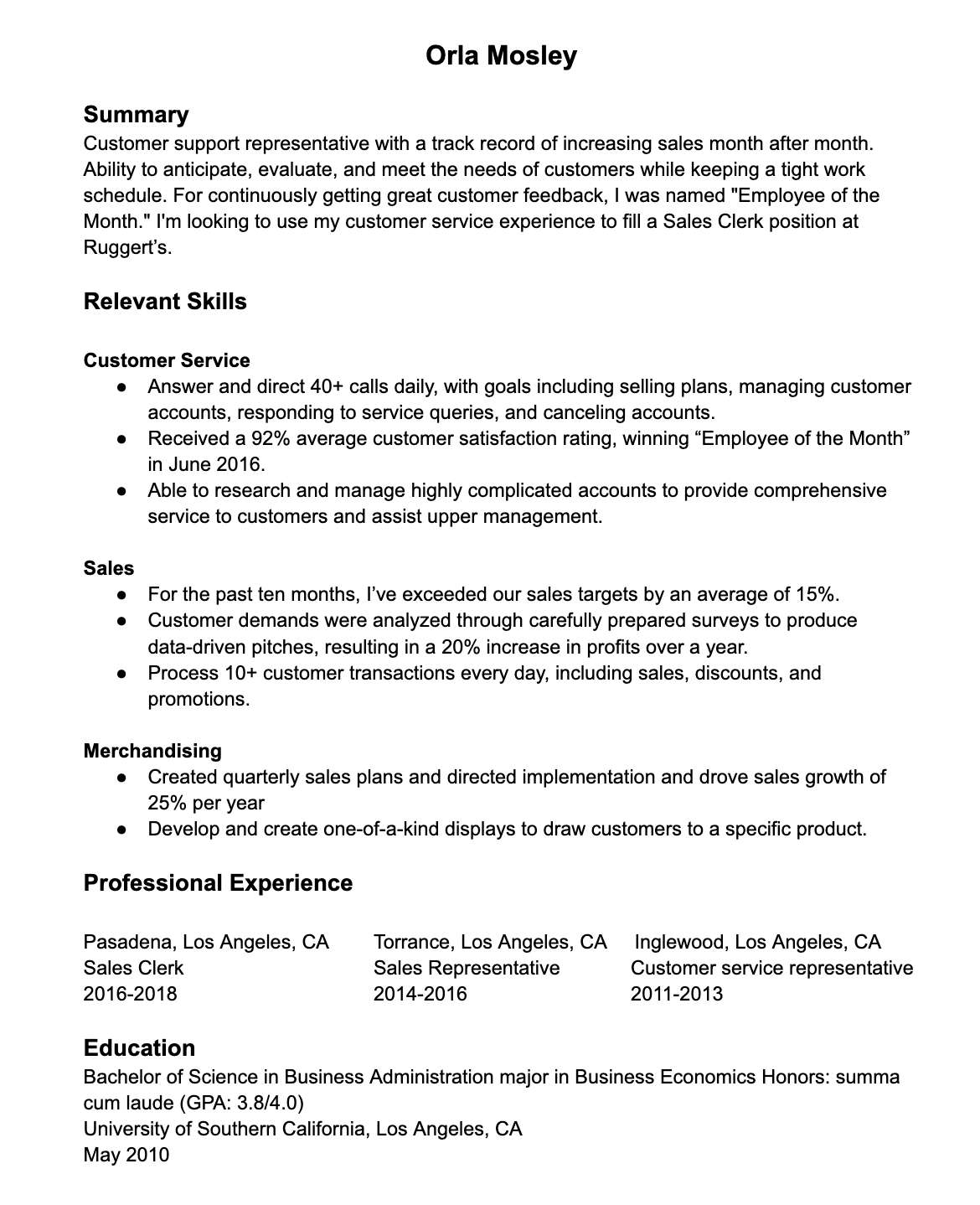You’re hunting for a new job, and you’re trying to learn how to write a functional resume. Don’t worry. We’ve got you covered. We’ll explain when using a functional resume is appropriate and how to write an impressive document. That way, you get more calls for interviews and, ultimately, more job offers.
Want to take the guess work out of writing a high-quality resume? Use a professional resume writing service.
What Is A Functional Resume?
Before we explain how to write a functional resume, we should define what it is. A functional resume is a resume that focuses on your skills (hard skills and soft skills) rather than the series of positions you’ve held. Unlike a chronological resume, it deemphasizes the timeline of your career and demonstrates how your abilities stack up against the job’s duties.
Benefits Of Using A Functional Resume
When written strategically, a functional resume engages the hiring manager or recruiter quickly. It helps them see why you’re the ideal applicant for the position because your relevant skills get presented front and center. With a functional resume, you can put your best professional self forward – even when your work history may seem lackluster for the role.
When To Use A Functional Resume
There are many instances when a functional resume might be more appropriate than a traditional chronological resume. You may want to consider using this resume style if you:
- Decide to change careers and don’t have relevant work experience in the new vocation
- Have substantial gaps in your professional history
- Recently graduated and don’t yet have a career history
- Acquired your skills outside of paid employment (e.g., volunteer position or mentorship)
In general, a functional resume could be right for you if a chronological resume doesn’t help you showcase your qualifications for the job.
A word of caution: Many recruiters and hiring managers would rather see a chronological resume. Plus, some applicant tracking systems may not properly process a functional resume. That means you should carefully choose which type of resume to use.
Related: How To Create A Resume With No Work Experience
How To Write A Functional Resume
Like a chronological resume, a functional resume has several different components. Here’s what it should include, in order:
- Heading with your name and contact information
- Summary statement that includes a brief glimpse into your skills, relevant experience and qualifications, and broad career aspirations
- Sections for skills you want to highlight that feature specific examples of your abilities in action
- Abbreviated work history that covers where you were employed, your title, and any accomplishments (employment dates optional; years often included)
Join The Break Community
- Education that includes the school you attended, what you studied, what degree you earned (if applicable), and any achievements
Here’s an example of a solid summary statement:
Detail-oriented and collaborative Certified Payroll Professional (CPP) with 10+ years of progressive experience. Modernized and streamlined the payroll process, which saved two hours of labor each pay period. Expert in ADP software.
You could also write your summary with bullet points:
- 10+ years of progressive payroll experience
- Certified Payroll Professional (CPP)
- Saved two hours of labor each pay period by modernizing and streamlining the payroll process
- ADP software expert
And here’s how you could showcase your skills:
Payroll Processing
- Processed payroll every two weeks for up to 5,000 employees spread out over three countries
- Reduced payroll errors by 10% within two months of hire
- Saved the company $20,000 per year by switching to a new payroll software
To maximize the effectiveness of your functional resume, follow these best practices:
- Review the job description closely, and be sure to include the skills the company is looking for on your resume (if you have them, of course!).
- If you’ve completed or spearheaded projects (can be personal) that required relevant skills, list them on your resume.
- Include a cover letter with your application to make a stronger case for your candidacy.
Functional Resume Sample

Frequently Asked Questions
What should be included in a functional resume?
A functional resume should primarily include a list of your relevant skills. However, it should also provide your contact information, an abbreviated work history, and your education or other credentials.
How do you write a good functional resume?
You can write a good functional resume by strategically highlighting your skills that are relevant to the job. Check out current job postings on different job boards to know what skills hiring managers are looking for.
Do recruiters like functional resumes?
In general, recruiters and hiring managers dislike functional resumes. If you can showcase your professional achievements with a chronological resume, you should probably opt for that format.
Is a functional or chronological resume better?
A chronological resume is better for most people. But, if your career trajectory is atypical or you’re trying to gain new experience, a functional resume could be appropriate.
The Bottom Line
If a chronological resume doesn’t do your professional capabilities justice, a functional resume may be your best bet. When you sit down to create the document, be sure to use the job description as your guide and list your most relevant skills first. If you need some help showcasing your qualifications, we encourage you to check out the best resume writing services on the market for assistance.













